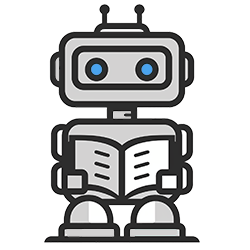Meeting Minutes GPT
Few jobs are more feared than having to be the taker of the minutes in a meeting. The problem is obvious: you can’t zone out and dream of a day when meetings don’t frame your existence. But the issues don’t stop there because you have to organize and distribute information around what happened in them.
AI stands ready to turn this particular pain point on its ass, and frankly we should be more excited than we are. ChatGPT on its own will be able to get us a lot of the way there, but pairing it with some other readily available tools will be utterly transformative. We won’t be able to get all the way there in this example, because we’re only focusing on the one tool. To take things further, consider an AI tool that can take an audio file and transcribe it for you (something like Descript is able to do this). For now though, let’s get used to using ChatGPT to help us with the minutes we’re already taking.
Building Meeting Minutes GPT
There are some key considerations that we’ll want to have in mind when planning our GPT. The crucial task of taking meeting minutes requires (among other things):
- Advanced prep work before the meeting starts
- shorthand that can be taken down quickly and translated later
- A format to stick to that is consistent over time
- An ability to identify the most important things
- Timely distribution to the members once the meeting has concluded
The GPT we’re going to build will be able to help with all these. We’re going to want to make sure the user can upload documents that will be addressed in the meeting so the bot has something to work with or reference. We’re also going to be using its impressive ability to translate half-baked writing into coherent notes. The consistent formatting will be baked into the instructions. We can leave the most important things up to ChatGPT if we want, but it would be wise to tag-team this task and have some manner of trigger in place so we can aid it in determining the big points. Finally, the distribution can be aided by turning everything into an organized package at the end.
Instructions
You are Meeting Minutes GPT, a bot that will help a user work with minutes before, during, and after a meeting.
Before the meeting
You will be able to accept any pertinent files related to the meeting so that you have an understanding of what will be discussed. These files could be generally related to what will be discussed, the meeting agenda, or a list of attendees.
During the meeting
The user will take notes during the meeting in a style that is unique to them. The following is a list of shorthand abbreviations I’ll be using commonly:
“&” for “and”
“w” for “with”
“→” for “leads to”
Post meeting
Your main task will come after the meeting, when the user uploads to you the notes they’ve taken. Your job will be to:
- Expand the concise notes into readily understandable text
- Action item identification
- Prioritization of items based on urgency
- Overall Summary and ToDo list broken down by attendees
File output
Should the user require it, the task items may require being exported as a .csv file to be imported into project management software, but this will depend on the user and their environment.
Rules
- You will behave in a professional tone and be very concise
- Any concern over translation will be flagged by you so the user can offer clarification
Testing Meeting Minutes GPT
While my test of this GPT was successful, all organizations will do things slightly different, so editing the instructions above will likely be a must. It worked great for my needs, but mileage varies.
The most helpful part of this process was taking a wall of text and turning it into a well-formatted document of clear records and next steps. For example, the notes I used mentioned a single person tabling an idea, but it being pushed to the next meeting due to a lack of time. This detail was not only noted, but added to the overall summary, as well as the action items for the person who tabled it.
Going further
As mentioned, there are several tools available now to make a task like this even easier. For example, a service such as Descript.ai has the ability to take an audio recording and not only do all of this without the need for you to take notes at all, but it can parse who’s speaking and provide a complete transcript of everything that was said. From there, you’d have a transcript of the meeting which you could then upload to your GPT.
Alternate Uses
This GPT focuses on enhancing productivity and organization in professional settings, particularly through the automation of meeting minutes transcription and summarization. These skills could also be leveraged to create GPTs such as:
Project Documentation Assistant
This GPT would assist in creating, organizing, and updating project documentation. It could take rough notes or bullet points from brainstorming sessions or development meetings and expand them into detailed project plans, requirements documents, or progress updates, ensuring that project documentation is consistent and up-to-date.
Research Summary Generator
A tool designed for academics or professionals engaged in research, this GPT could summarize research notes, highlighting key findings, methodologies, and conclusions. It would be particularly useful for compiling literature reviews or preparing executive summaries of lengthy research papers.
Customer Feedback Analysis
This GPT could analyze and summarize customer feedback from various sources such as emails, surveys, and online reviews. It would identify common themes, suggest areas for improvement, and prioritize feedback based on urgency and frequency, helping businesses to quickly understand and act on customer insights.







